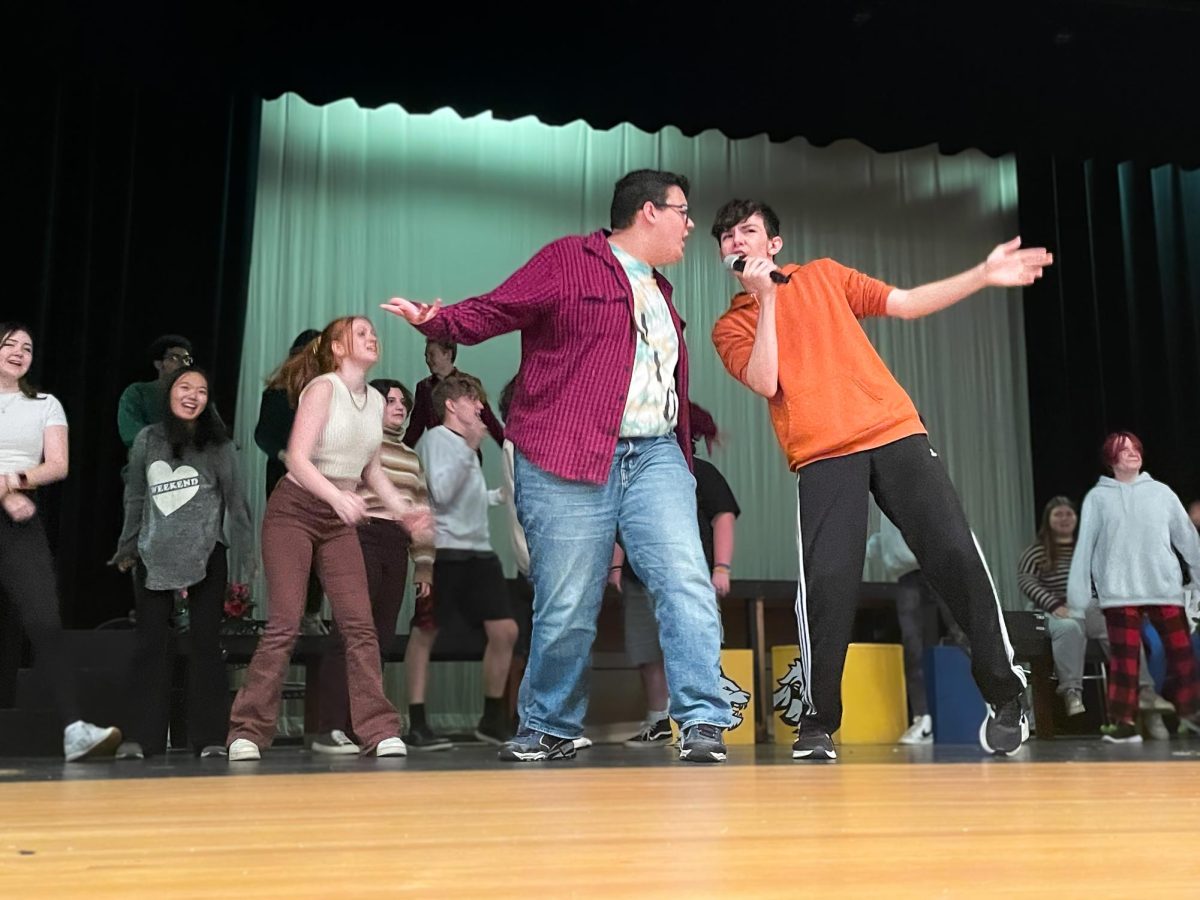Out of all the new franchises of the last half-decade, I can’t think of one that has exploded quicker than “Dead Space”. I should tell you that since this is a horror game, it is rated M for mature. The original game appeared in 2008 to generally positive reactions, but before the game was even released, there was already an entire mass-marketing campaign by EA. Over the last 2 and 1/2 years the series has existed, we’ve had the original third-person horror game, two fully animated movies, four full-length comic-book serials, a spin-off prequel game on the Nintendo Wii, an interactive comic-book game on Xbox Live Arcade and Playstation Network, an abundance of novelty items and merchandise, and now, the sequel to the original for 2011.
In terms of single-player adventures, the original “Dead Space” is probably one of my all-time favorite games ever–and I am not kidding here at all: it was magnificent. Many people have trashed it for being cliche but I’m one of the few people who appreciate “Dead Space” as one giant conglomeration of tributes the the sci-fi horror genre. The back-story is one of the most engrossing I’ve ever seen in a video game, and overall the series has done so many little things right and perfected the art of survival horror. Just the pure concept of a new “Dead Space” game like the original was enough to get me psyched and I stayed that way for an entire year. My ultimate verdict: it’s not as good as the original.
The game’s cinematic presentation is tied very much to the story presentation. In the original, there were only two cutscenes–one at the very beginning and one at the very end–with the narrative instead being told through audio, video, and text logs that could be viewed on-the-spot in the middle of gameplay. Here, not only are there a lot more cut-scenes, but the amount of dialogue has been increased quite a bit as well. Case in point: the main protagonist Isaac Clarke. In “Dead Space”, Isaac only showed his actual face during the two cutscenes I just mentioned. He never said a word outside of grunting or mumbling something underneath his helmet. Here, Isaac has his own voice-actor and isn’t afraid of removing his face-plate either (even in the middle of situations where someone is trying to attack him and he would been better protected if he just kept the stupid thing on). On one hand–sure, why not. If Isaac is going to be a recurring character in this franchise, then it makes sense to give him a personality and actual involvement in the story. The problem here is that Isaac sounds extremely generic; his voice actor doesn’t do a bad job, actually, and the script still holds up, but it seems like they tried way to hard to make Isaac sound like another Nolan North-inspired action-game character. His personality is not interesting enough to sacrifice the immersion you get while playing as him. Instead of grunting, Isaac sometimes talks in the middle of gameplay, which gives you the impression that you are not actually in the game itself but that you are just controlling some other fictional character. Sure, he still is not exactly a chatterbox, but especially for a horror game, this is is not ideal and breaks the atmosphere in a couple of moments.
The Dead Space series has always been much more about the exposition and back-story as opposed to its characters and immediate plot, and “Dead Space 2” is no different. After surviving the outbreak of the alien Necromorphs on the spaceship Ishimura and witnessing the death of his girlfriend (as well as everyone else on the stinking ship), Isaac has been mentally scarred by the cause of all the madness: the Marker. Years later, he wakes up on Titan Station (nicknamed the Sprawl), a large orbital space station around Saturn’s largest moon. It does not take long before he figures out that the Necromorphs are making a mess of the place, and Isaac has to figure out what the heck is going on while trying to cure his dementia, stop the outbreak, and escape in one piece. Everything about the plot is passable for video-game standards, but if you really want to get anything out of the story, then you are still going to want to pick up the hidden logs around the ship to figure out just what the heck happened to the Sprawl and all the extra information on the back-story. I still consider this form of story telling to be ideal–you can just go along for the ride and get a decent bug-hunt story, or you can delve into the extra content if you are so inclined. There might be more cutscenes this time around, but the story still manages to be thought-provoking and well-thought-out while never shoving anything straight in your face. It is not the be-all-and-end-all of video game stories, but I still really enjoyed it.
“Dead Space 2” is a game where you can tell the developers listened to the complaints against the original, and literally did everything to satisfy those complaints whether it was beneficial to the game or not. Foremost, Isaac was considered unrelatable in the first game because he didn’t talk, so they gave Isaac a voice-actor. The first game’s setting: the design of the Ishimura space-ship in the first game was considered a bit too repetitive and overly monotonous. You spent most of the game walking through gray and brown corridors and a lot of people considered it to be lacking variety. The result: the Sprawl looks much more colorful and varied. Most of the game is spent in civilian plazas, churches, and even schools, and it was obvious the developers wanted this place to look like it was a nice place to live. The problem is that nothing really feels cohesive; you rarely feel like you are naturally traversing one location to another and nothing really seems to flow that well. I like the Sprawl, but I prefer the Ishimura by far.
Another problem with the presentation is the lighting. Before I say anything, I have to say that the actual graphics look fantastic. The lighting itself is some of the best I have ever seen in a video game. However, with all of the happier colors in the setting, “Dead Space 2” feels that, in order to be scary, it needs to be really dark. Literally half the game is spent in complete darkness, with one of the few light sources in the room being the neon tube located up Isaac’s suit and the flashlight attached to your gun. I know horror games are not supposed to be florescent light shows, but it is often more of a pain in the butt than actually scary. It is pretty much impossible to navigate these environments without shining your flashlight all over the place, and it makes observing the great details in the environment much more difficult. “Dead Space” was not exactly a bright game either, but at least it let you see everything just fine. I turned up the brightness up around eighty percent and I still had problems finding my way around.
I really appreciate the new enemies. The bad-guy variety was a complaint in the first, and while I never really got bored of fighting the same enemies over and over, it would have been nice to see some more. What really fantastic here is that every new enemy in Dead Space 2 has a purpose–they are not just added in for the sake of having greater enemy variety, and every single one is unique and throws a corkscrew into the gameplay. The Puker does exactly what you think he does. The Pack is a group of small children that attack in numbers, which completely goes against the systematic style of combat in Dead Space–instead of fighting one or two enemies at once, you are often surrounded on all sides by a dozen or more. The Stalker is a dog/dinosaur type enemy that also hunts in packs. They are extremely intelligent and will try to distract you as another works to charge at you from the other side of the room. I could go on and name more, but each enemy that’s introduced changes the gameplay dynamic and offers new and interesting styles of play. The creature designs are great, too.
There are a few new weapons, and I enjoyed most of them, but I find that a lot of them are not very cohesive with the rest of the arsenal. Dead Space is all about dismemberment, but not a single new weapon is a cutting tool–they are all based around either explosives, regular bullets, or impalement. Sending Necromorphs flying through the air with the Javelin Gun is extremely satisfying and tons of fun, but there are several objects in the game that you can use Kinesis on that serve the same purpose. The guns still feel overpowered, but that is fine; taking a sledgehammer to the Boogie Man from your nightmares is exactly the kind of therapy I want from a horror game.
Dead Space 2 is actually surprisingly difficult compared to the first game. Enemies are more aggressive, attack in greater numbers, use more projectiles, and the enemy placement is much less predictable. The Zealot and Hardcore settings are legitimately challenging, as weapon ammo is so rare that, for the first time ever, I actually had to buy ammo from the stores and died a couple times in combat. Stasis is far less abusive, because even though it automatically recharges, its freezing effect on enemies is much, much shorter. Again, this makes sense. This game is designed for those who have played and mastered the original, so setting the difficulty curve up higher is necessary. Bosses are sadly even rarer than they were in the first Dead Space. There are some cinematic sequences with big monsters that I suppose I could count, but they are extremely short and are more like quick-time-events than anything else. Mini-bosses are more frequent, but the same two are reused constantly. There isn’t a single fight that wasn’t memorable for me, though.
Laughably enough, there is actually online multiplayer, but I can not see why people hate it so much. It is true that the balancing is horrible and there is not much variety, but it is not meant to be the next “Call of Duty.” It’s is just a quick little extra that you can play around with for a bit and then move on. There is actually a decent EXP system, so if you feel compelled to keep playing it, then you can go ahead and do so. Plus, you have to think about it–how many other horror games have multiplayer, let alone decent multiplayer? I had fun with it, although I doubt I’ll ever want to touch it again for the rest of my life.
There is really not the much to dislike about “Dead Space 2”, and there is no reason why I have bashed the game for so long based on such minor complaints. The gameplay is intense, the atmosphere is deliciously thick, and there is more variety, polish, and action than ever. In a lot of ways, especially in terms of gameplay, I consider “Dead Space 2” game to be just about perfect and one of my favorite games of all time. Sadly, so is the original “Dead Space”, and while “Dead Space 2” is different in a lot of ways, it still isn’t a 100% fresh experience to me anymore. Like I said before, you can tell that the people who made these games really looked at the criticism from the original and did everything they could to change “Dead Space 2” for the better. The sad fact is that… well, critics are not necessarily always right. The majority is not always right, either. If all games were changed based on every criticism ever made by a reviewer, the video game industry would be a dark, desolate place–far more desolate than the Ishimura, the Sprawl, or the entire empty void of space itself. Most of my complaints mostly derive from cosmetic or aesthetic alterations and from the fact that, you know, people do not like changes in anything. I am not about to say that you should not fix what is broken, because “Dead Space” is a franchise with unlimited potential, and to stop innovating right now would cause it to lose everything that I cherish about it: it is intense, it has great atmosphere, it has fantastic shooting and gameplay, the story is expansive and involving, and despite the series’ numerous inspirations, there’s still no other game quite like it. I might feel a little dead inside that this game was not what I wanted it to be, but then again, while playing it, I have never felt more alive.
GameCrank is written by Patrick Pontes






